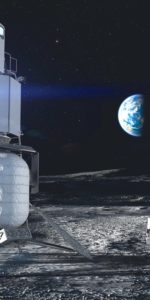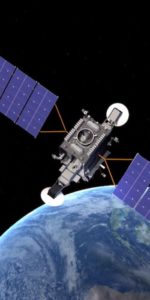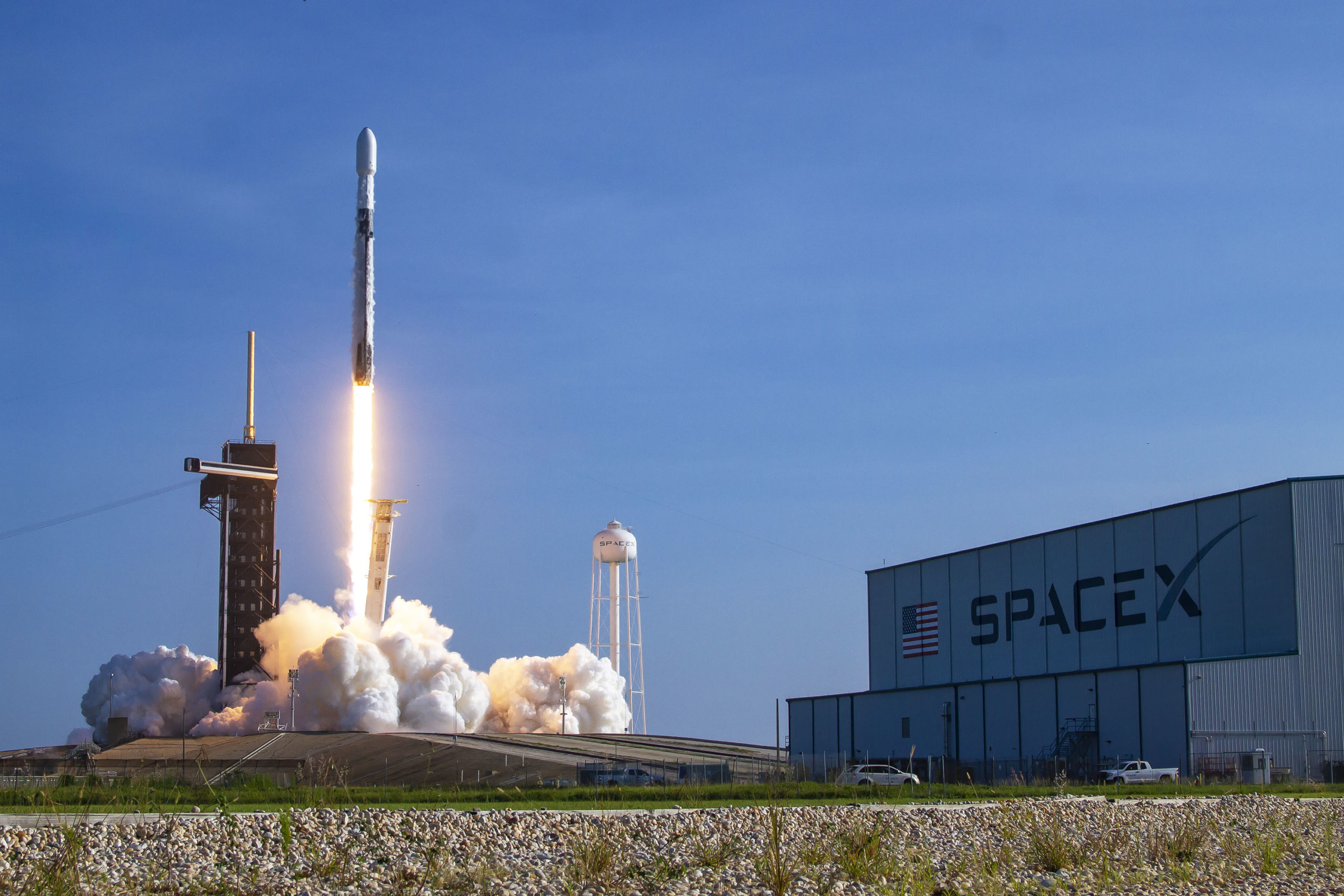
SpaceX aims to launch a flight-proven Falcon 9 core for the third time in a single calendar year as early as Thursday, as it seeks to deliver another 60-strong batch of Starlink internet communications satellites into low-Earth orbit. Liftoff of the history-making B1058 core—which first saw service to loft the Demo-2 flight of Crew Dragon and kick off “Bob and Doug’s Excellent Adventure” on 30 May, then launched South Korea’s ANASIS-II military communications satellite seven weeks later on 20 July—is targeted from historic Pad 39A at the Kennedy Space Center (KSC) no sooner than 2:19 p.m. EDT Thursday.
If it flies on time, B1058 will clock its third launch in just 110 days and will become the fourth Falcon 9 to have logged as many as three missions in 2020.
A successful launch on Thursday will mark SpaceX’s 17th flight of the year, setting 2020 in third place for the highest number of Falcon 9 missions, topped only by the 18 launches in 2017 and 21 launches in 2018. And this most unfortunate of years has seen all but two missions flown on previously-used Falcon 9s, including the first-ever fifth and sixth flights by an orbital-class rocket.
Ten batches of Starlinks have flown, together with a powerful Global Positioning System (GPS) Block III navigation and timing satellite for the U.S. Space Force, Argentina’s SAOCOM-1B Earth-imaging platform, ANASIS-II, a high-altitude In-Flight Abort of Crew Dragon, the CRS-20 cargo ship to the International Space Station (ISS) and, of course, the historic voyage of Dragon Endeavour. Eleven returning cores have alighted on the deck of the Autonomous Spaceport Drone Ship (ASDS), whilst two have done likewise on Landing Zone (LZ)-1 at the Cape.
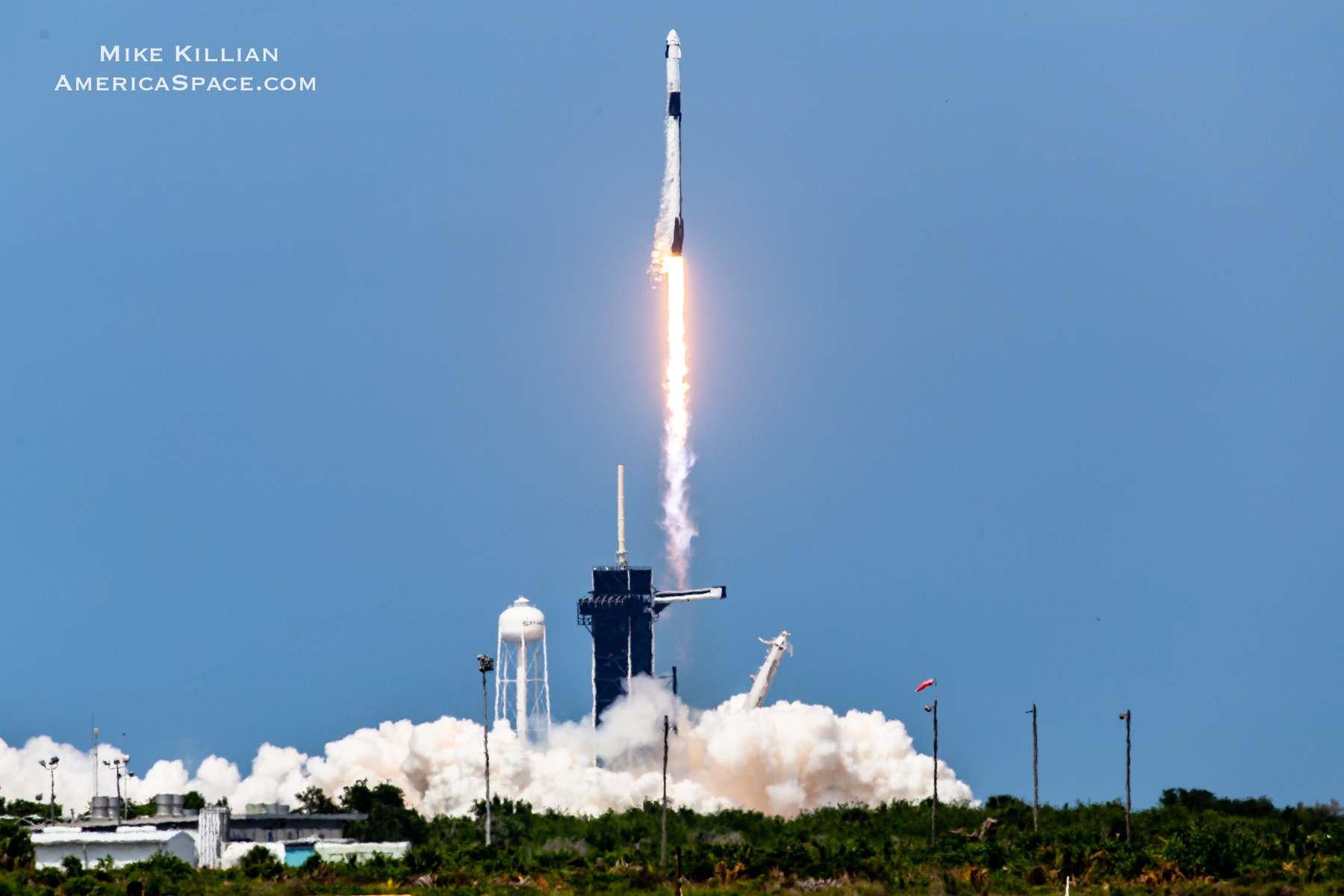
In readiness for Thursday’s opening launch attempt, the ASDS “Just Read the Instructions” put to sea last Sunday, bound for a position about 390 miles (630 km) downrange of the Cape. Having previously supported seven successful Falcon 9 landings off the West Coast between January 2017 and January 2019—including the first and last Iridium NEXT missions—JRTI began the long journey to the east coast last summer, as SpaceX’s launch cadence from Florida ramped up. It scored its first Falcon 9 “catch” in the Atlantic Ocean in June 2020 and has since repeated this feat by similarly snaring B1060 as it wrapped up its first flight later that same month.
But waiting in the wings with an ever-present danger is Hurricane Sally, which first arose over the Bahamas last week and was officially designated a tropical depression on 11 September. Shortly after making landfall near Miami, it strengthened into a tropical storm and over the following days rapidly intensified to hurricane strength, firstly to Category 1 and by the evening of the 14th to Category 2. And despite being temporarily weakened on Tuesday by increased windshear and upwelling, it re-intensified on Tuesday, with sustained winds around 80 mph (130 km/h). Sally currently resides to the southwest of Pensacola, progressing slowly northwards.
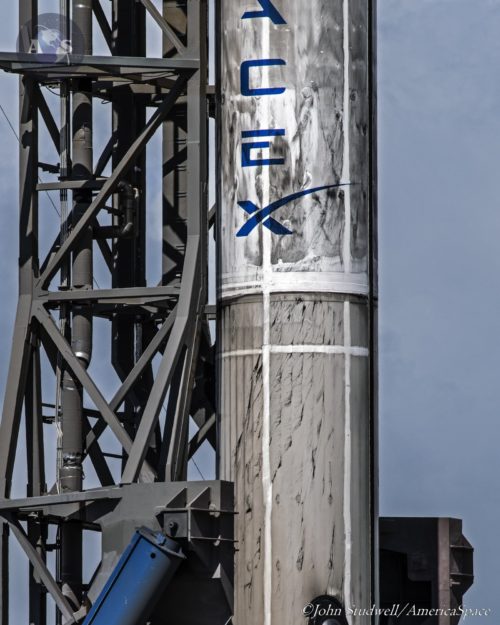
Its presence has produced a 60-percent outlook for favorable weather on Thursday, with a marked deterioration to just 40-percent in the event of a 24-hour scrub to Friday. “Hurricane Sally will continue to influence the weather across the Spaceport for the week,” noted the 45th Weather Squadron at Patrick Air Force Base in its L-2 briefing, issued Tuesday. It was stressed that the hurricane is expected to progress eastwards and make its way through the Deep South of the United States.
“The influence of the system will keep south-southeasterly winds in place, limiting shower and storm chances through mid-week across the Spaceport and keeping most activity inland,” the 45th added. “By Thursday, winds will become more southwesterly across Central Florida as the remnants of Sally are expected to merge with a frontal system. This will delay the development of the east coast sea breeze and push activity from west to east across the state, increasing the chances for afternoon and evening showers and thunderstorms.”
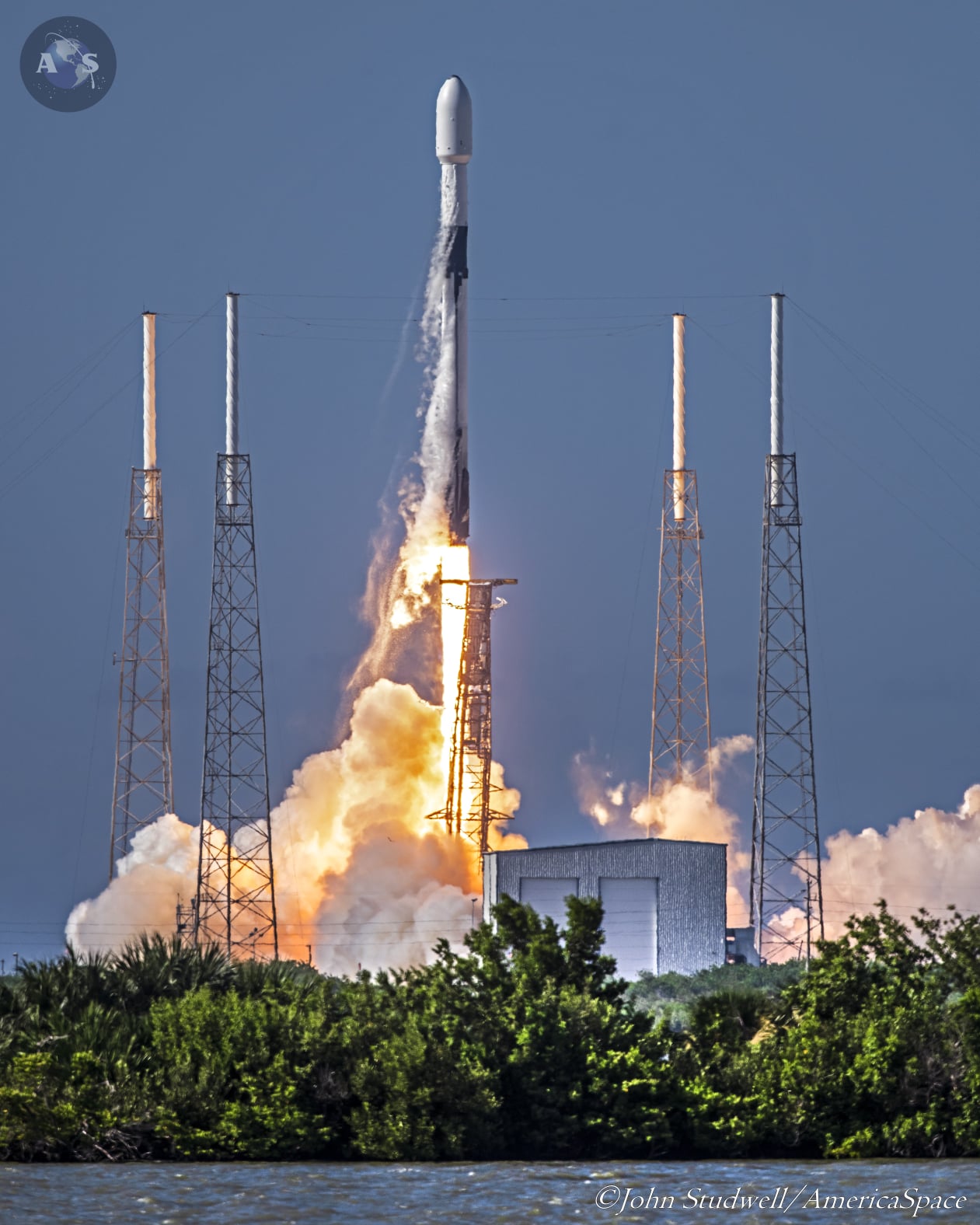
As such, potential infringements of the Cumulus and Anvil Cloud Rules are the principal violating factors fror Thursday, caused by afternoon convection and added moisture and instability induced by Sally. And as her remnants move into Florida on Friday, they will bring a return of tropical moisture and an elevated likelihood of inclement weather with additional thick cloud cover.
Elsewhere, on Space Launch Complex (SLC)-37B at the Cape, a United Launch Alliance (ULA) Delta IV Heavy is targeting No Earlier Than (NET) 26 September for its long-delayed NROL-44 mission on behalf of the National Reconnaissance Office. Postponed since 29 August by a stuck pad-side regulator, it was initially noted by ULA that a minimum of one week was necessary to reconfigure the triple-barreled booster for another attempt.
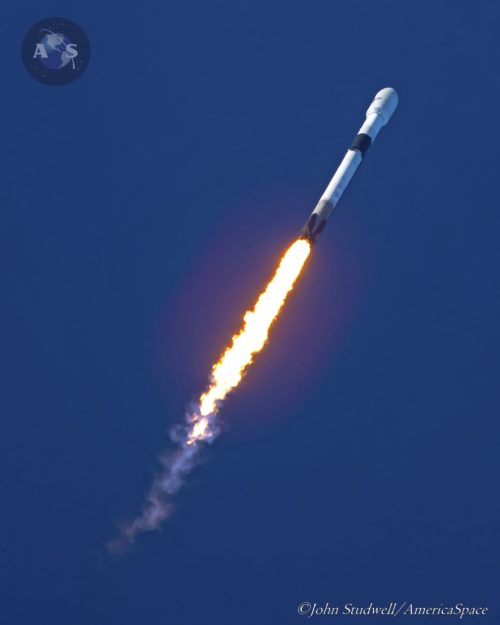
NROL-44 had already had its launch date shifted from June to August, for reasons which remain unclear, before suffering two scrubbed attempts to get airborne late last month. Postponed 24 hours past its original 26 August target, at the NRO’s request, an attempt on the 27th was itself moved two days to the right in response to a power redundancy issue in a critical ground-side pneumatics control system.
In the pre-dawn darkness of Saturday 29th, a heater issue during the countdown was resolved by the sterling work of the anomaly team, led by Anomaly Chief Dave McFarland, but launch was ultimately aborted in a dramatic “Hot Fire Abort”. The Delta IV Heavy’s starboard-side Common Booster Core (CBC) had ignited as planned, but the requisite start conditions were not met to proceed with the ignition of the core booster.
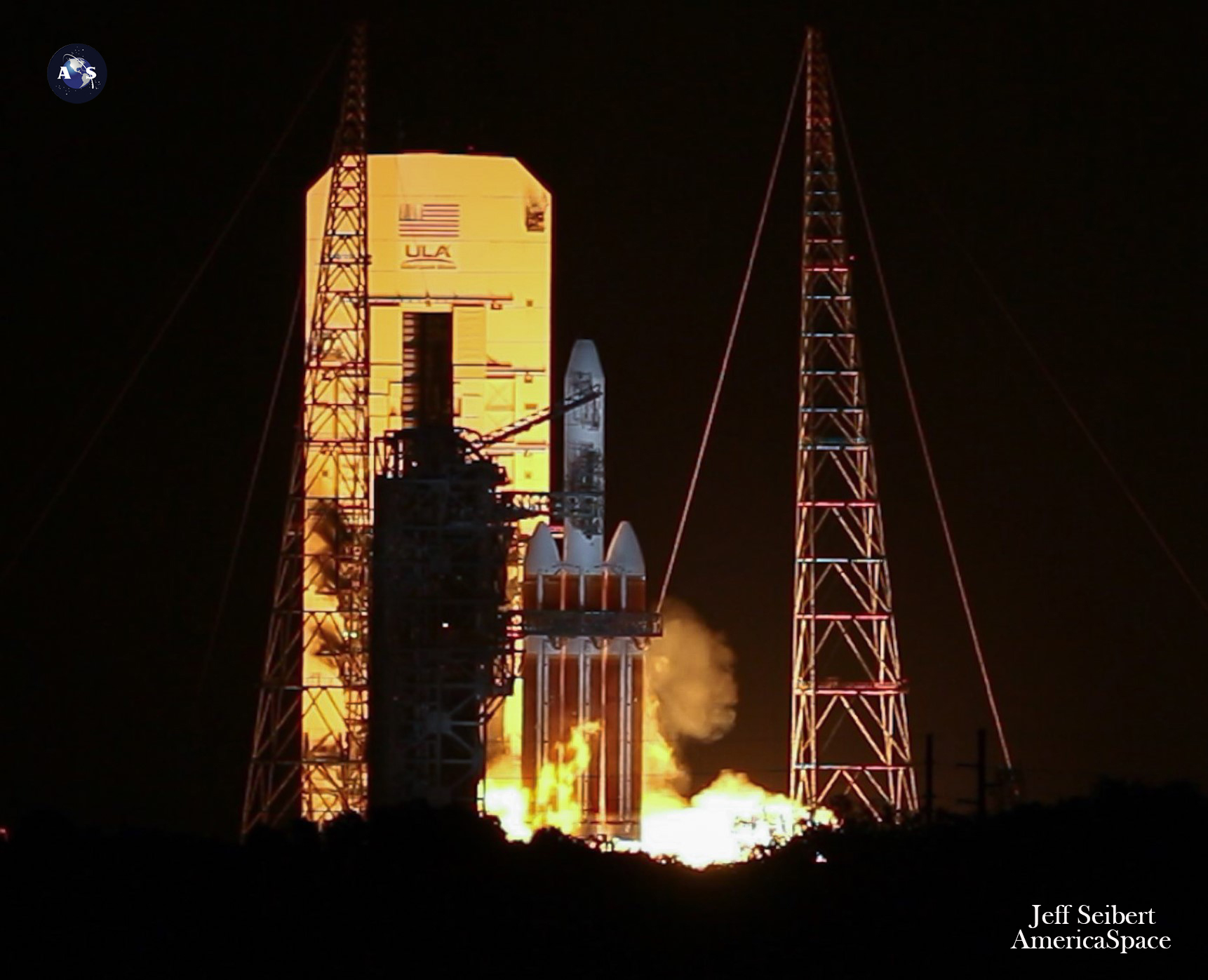
As a consequence, the Terminal Countdown Sequencer Rack (TCSR)—which manages the countdown in those final few seconds, including the ignition and ramp-up of the Delta IV Heavy’s three RS-68A engines and release of the rocket from the pad—automatically halted the launch attempt at T-3 seconds.
It was a dramatic sight, as the Delta IV Heavy’s characteristic “fireball”, triggered by the highly visible burning-off of residual hydrogen under the engines, flared and died and a pall of ashen-gray smoke enveloped the 235-foot-tall (72-meter) rocket, after which an unearthly silence enveloped the scene. In the minutes after the abort, safety systems whirred into action as fire detectors verified that the pad was safe and efforts to “de-tank” the Delta IV Heavy of its 440,000 pounds (200,000 kg) of liquid oxygen and hydrogen propellants began.
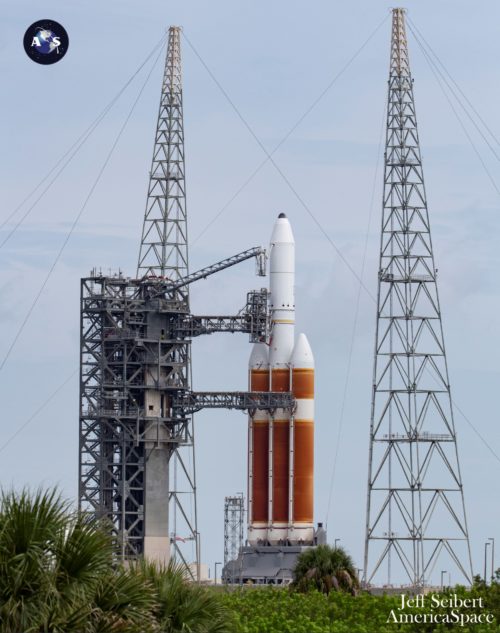
“Found root cause of the pad-side stuck regulator,” Mr. Bruno tweeted last week. “Torn diaphragm, which can occur over time. Verifying the conditions of the other two regs. We will replace or rebuild as needed, re-test and then resume towards launch. Mission success is the first priority. Currently, NET 18 Sept.”
“The ground system regulator supplies helium to the core booster,” ULA’s Julie Arnold recently told AmericaSpace. “Additional testing allowed us to isolate the failure to the regulator. Upon internal inspection, a tear in the diaphragm was verified to be the root cause.”
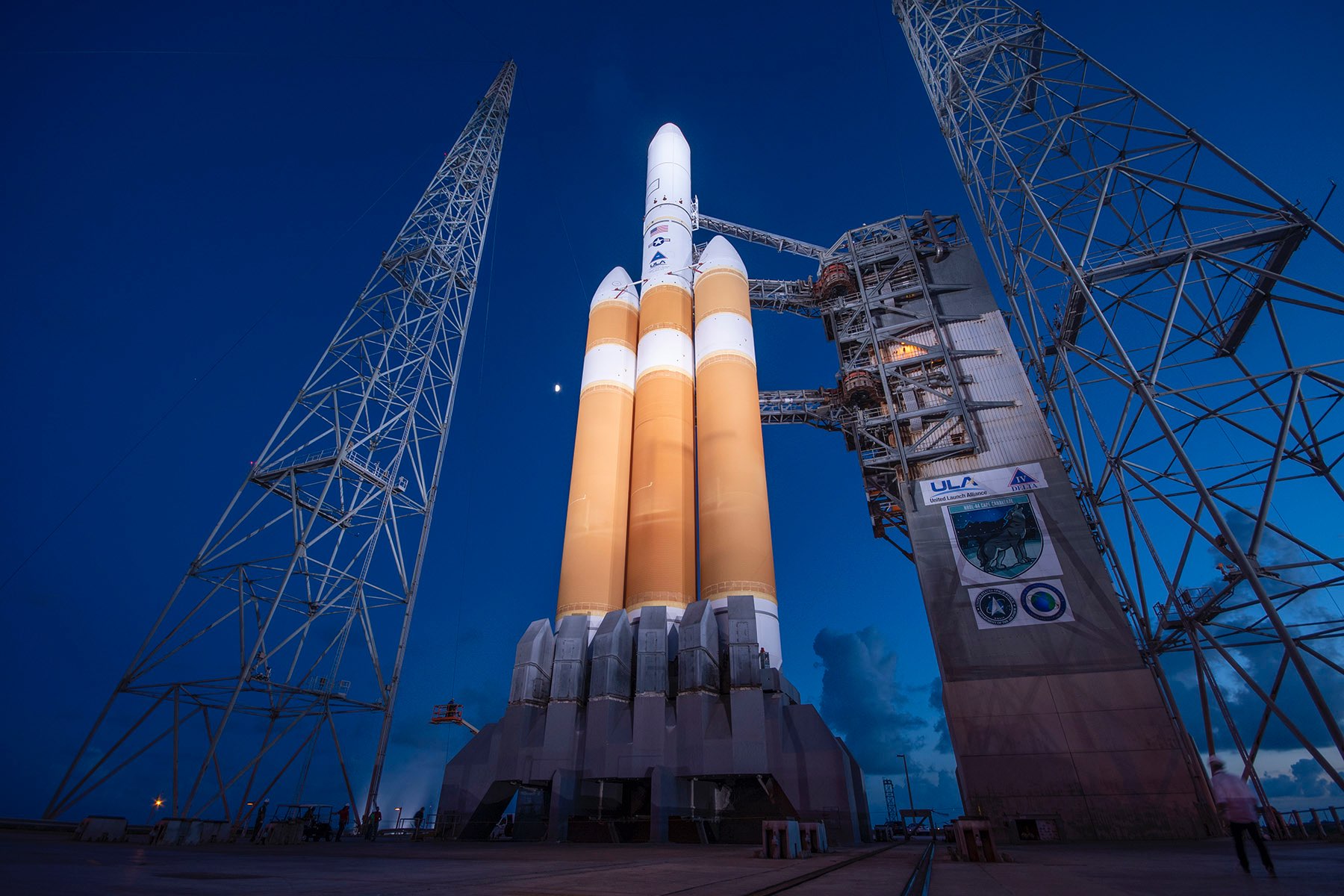
She confirmed that all three regulators—one for each Common Booster Core (CBC)—are currently in the process of being inspected and re-tested. Earlier this week, Mr. Bruno noted that “to be safe”, ULA was opting to replace all three regulators, necessitating an additional delay and a new NET of 26 September.
It remains to be seen how the shifting sands of the Cape’s launch manifest will affect other downstream missions. SpaceX tentatively had another Starlink flight targeted for launch before month’s end, which looks likely to slip into October. It is expected to fly atop the veteran B1051 core, making its record-tying sixth launch. And a brand-new core is also slated to deliver the fourth GPS Block III satellite to Medium Earth Orbit (MEO), possibly as soon as the evening of 30 September.
.
.
FOLLOW AmericaSpace on Facebook and Twitter!
.
.




